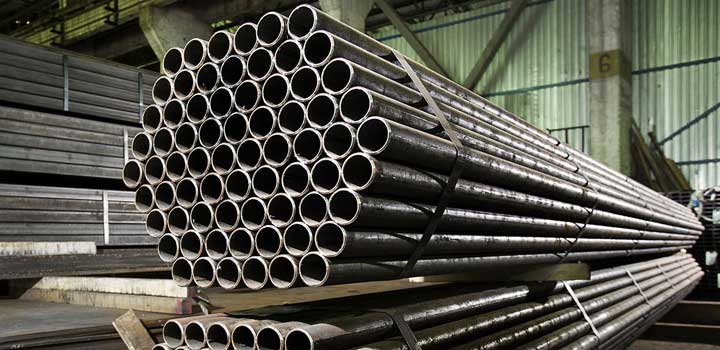BS 6323 Part 5 Specification

Table of contents
- BS 6323 Part 5 Specification
- BS 6323 Grade CFS 5 Tube Standard Length Tolerances
- BS 6323 Part 5 Chemical Composition
- Mechanical Properties of BS 6323-5
- EN 1.0408 Equivalent Grade
- Diameter Tolerance of St 45 ERW Pipes
- BS 6323-5 Tube Material Testing
- Application of BS 6323 Part V ERW Tubes
BS 6323 Part 5 Specification
BS 6323 Part 5 is a widely recognized standard for seamless and welded steel tubes used in industrial and engineering applications. This specification outlines the requirements for materials, dimensions, mechanical properties, and testing procedures to ensure quality and performance. It is commonly used in the manufacturing of high-pressure and structural components.
| Grade | BS 6323 Part 5 |
|---|---|
| Thickness | Custom |
| Length | 12m / 6m / 6.4m |
| Ends | Plain / Threaded / Bevelled |
| Processing Service |
|
| Pipe Type | ERW / CDW |
| Heat Treatment | Stress Relieved (BK+S) |
| Internal Diameter Accuracy | H7 / H8 / H9 |
| Internal Surface Roughness | Ra0.2~0.8um |
| Threads Configuration |
|
Standard Length Tolerances for BS 6323 Grade CFS 5 Tubes
Maintaining accurate length tolerances is crucial for ensuring proper fit and function in various applications. The following table provides the standard length tolerances for BS 6323 Grade CFS 5 tubes based on their outer diameter (OD).
| Component Length (mm) | OD 30-100 mm | OD 100-254 mm |
|---|---|---|
| 10-100 | + 1.0/- 0 | + 2.0/- 0 |
| 100-600 | + 2.0/- 0 | + 3.0/- 0 |
| 600-1200 | + 3.0/- 0 | + 4.0/- 0 |
| 1200-5000 | + 5.0/- 0 | + 6.0/- 0 |
Carbon Content in BS 6323 Part V ERW Tubes
BS 6323 Part V ERW Tubes typically contain around 0.25% carbon, which contributes to their strength and hardness. This level of carbon allows for a good balance between weldability and machinability, making the material versatile for use in various industrial applications. It ensures durability while maintaining ease of fabrication.
Chemical Composition of BS 6323 Part 5
The chemical composition of BS 6323 Part 5 plays a vital role in determining its mechanical properties and overall performance. Below is a breakdown of the key elements:
Mechanical Properties of BS 6323-5
BS 6323-5 tubes are known for their excellent mechanical properties, including a yield strength of 350 MPa and a tensile strength of 540 MPa. These values indicate that the material can withstand significant stress without permanent deformation or failure. This makes it ideal for use in pressure vessels, pipelines, and other critical applications where reliability is essential.
| Yield Strength | Tensile Strength |
|---|---|
| 350 MPa | 540 MPa |
EN 1.0408 Equivalent Grade
The EN 1.0408 grade is equivalent to BS 6323 Part 5 and is also known as St 45. It is commonly used in European standards and offers similar mechanical and chemical properties. This grade is suitable for a wide range of applications, especially those requiring good formability and strength.
| Standard | EN |
|---|---|
| DIN 23912 | EN 1.0408 / St 45 |
Diameter Tolerance of St 45 ERW Pipes
Diameter tolerance is an important factor in the performance of ERW pipes, especially in applications where precision is required. The tolerance limits vary depending on the T/D ratio, which is the thickness-to-diameter ratio of the pipe.
| T/D-ratio | Tolerance Limits |
|---|---|
| ≥0.05 | 1 |
| 0.05>T/D≥0.025 | 1.5 |
| <0.025 | 2 |
Material Testing for BS 6323-5 Tubes
To ensure the quality and performance of BS 6323-5 tubes, several tests are conducted during the manufacturing process. These include:
- Chemical Analysis
- PMI Testing
- Flattening Test
- Micro and Macro Test
- Mechanical Testing
- Hardness Test
- Intergranular Corrosion Test
- Pitting Resistance Test
- Flaring Test
Applications of BS 6323 Part V ERW Tubes
BS 6323 Part V ERW tubes are widely used in various industries due to their strength, durability, and versatility. Some common applications include:
- Water pipeline systems
- Natural gas distribution lines
- Automotive components
- Oil and gas industry
These tubes are ideal for projects that require reliable and long-lasting performance under different environmental and operational conditions. Whether you're working on infrastructure, machinery, or transportation, BS 6323 Part V ERW tubes offer a dependable solution.
Shelf Cross Brace Roll Forming Machine
Shelf Crossbar,Installation Of Shelf Braces,Storage Shelf Braces,Performance Of Shelf Beams
Huai'an Senyu Intelligent Technology Co., LTD , https://www.jshasyzn.com